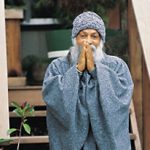Part 2: Bodhena travels across Africa in the early seventies
The trips back in those years (in the early seventies) were perhaps the best ones that I went on. Everything was new to me, and there was a whole world out there to discover. In the following summer, Africa was the next goal I picked. I flew to Cairo, took a good look around Egypt, and in Aswan got on a boat to take me along Lake Nasser to Wadi Halfa in Sudan. It was July, and blistering hot. On the boat, my fellow travelers and I started to fantasize about getting us a cool beer from the tap once we’d arrive. No such luck.
Wadi Halfa consisted of a few forlorn small mud and brick buildings in the middle of the desert, a few miles from the lake, and the only thing available was hot tea and lukewarm bottles of Fanta. We had to wait around half a day, which didn’t do much to raise our spirits, until we embarked on a 36-hour train trip that would bring us to Khartoum. We were traveling fourth class, since that was the cheapest, and the train was so packed that we were practically sitting on top of each other, together with the locals and their goats and chickens. Outside, nothing but desert. The nights were a bit of a relief, and we climbed on top of our railroad car to spend the time there in the cool breeze.
In Khartoum, it took me a couple of days to get the necessary papers, permits and tickets together for my further trip up the Nile, and I got a good taste of a corrupt and inefficient bureaucracy at work. It was another 12-hour train ride south to Kosti, from where it went on by boat. In effect, it was four sizable steamers, crowded as seemed to be the local custom, and tied together with two in front and two in the back, that were slowly laboring up the river. And I was traveling deck class.
Nobody knew exactly how long it would take to reach Juba, our destination way down in southern Sudan, close to the Ugandan border. Slowly, the landscape changed from monotonous desert to monotonous lush green. In the north, the population consisted of Arabs that were Muslims, while in the south it was blacks, of a Christian faith that still had a lot of animistic elements. We stopped at one town that had a few small shops where some canned goods could be bought. The other stops were at more or less traditional villages, with the natives still running around in their birthday suits, and the only thing they had to sell was fish and live chickens.
The food that could be bought on the boats was very basic, at the most, and by the time we reached Juba after 10 days I’d had pretty much enough of the Sudan. Sure, today I look back at that trip in a more romantic and nostalgic way, but at that time all I could think of was to get the fuck out of there. So I did just that and within a couple of days managed to get on an Air Sudan flight bound for Entebbe, Uganda.
Talking with some of the other passengers on the flight, I first heard of a guy named Idi Amin, who was running Uganda and who was supposed to be rather crazy, and that not in the positive sense of the word. In fact, he was a total crackpot, and I soon was to find out about some of the side effects of his rule.
Upon arrival at Entebbe, I was told at immigration that unless I shaved off my beard I’d be taking the next plane out of the country. Apparently hippies were not very welcome, and if you happened to have a beard, that made you one. I did manage that shave, somehow, and proceeded to Kampala, where I just wanted to take a breather and eat some decent food.
And yes, thrown in as a bargain, during a stroll through town I managed to catch a glimpse of The Man. In a small park, standing on a low podium and surrounded by a sizable crowd, there was no other than Idi Amin, with a revolver on each hip, giving a speech. However, I felt it would be better to keep a low profile, disappeared around the next corner and went back to my hotel. The next day, I left Kampala to take a look around the country.
Uganda is a very pretty country, with a lot of wildlife that can be seen just from a passing car. I still have that picture of myself sitting on the equator, with one half of my rear end in the northern hemisphere, the other half in the southern one. The people were friendly, if a bit naive – they didn’t appear to be as sophisticated as the Indians I had encountered the year before.
It was mainly whites that I hitched rides with that were telling me all kinds of stories about what was going on in the country, and I started to get a bit concerned. A lot of people were disappearing mysteriously, dead bodies were dumped into the Nile by the truckload, and the army was manning the borderposts to Kenya. If they felt like it, they helped themselves to the valuables of people leaving the country. Hm, maybe I should have taken that “next plane out”, but it was too late. Here I was, and I had to face the facts.

Back in Kampala, I met Marvee, an Australian who felt in a similar way, and he had an idea. Situated right on the border to Kenya was Mt. Elgon, an ancient, long extinct volcano, all of 14,178 feet (4321 m) high. Supposedly it was a very nice hike if you went up in Uganda, crossed the border at the top, and then went down to Kenya. “Sounds like a good plan,” I said, and off we went.
We hitchhiked as far as we could, and then took a taxi until we came to the end of the road in a small village. We had figured that it would take us three to four days to cross the mountain, and with our last Ugandan shillings bought a bit of food at a local grocery store, then left the village on a dirt track that seemed to be heading where we wanted to go. A local policeman came running after us, trying to tell us that we couldn’t go further up, but we didn’t bother. We went on up, and up, and up.
The last people we’d see for the next few days we met during the morning of the second day – some tribesmen on the hunt with bow and arrow (no kidding). Around noon on the third day we reached the top, or rather, the crater. Most of the vegetation had by now disappeared, and up there was only grass and some strange looking larger plants. The crater was a few miles wide, and while we were crossing it, it started to rain, hard, and soon we were soaked. Luckily enough, we found a small cave a ways down on the other side, where we made a fire and spent a very cozy night.
We couldn’t really go wrong, we just had to keep on in a generally eastern direction, heading down now, and until then for most of the time we’d had some kind of a path. Then, during the morning of the fourth day, we came into an area inhabited by wild elephants. Parts of the forest were smashed to pieces, as if a hurricane had gone through it, and we lost our path. We actually saw some of the elephants, stomping around in the jungle maybe a hundred yards off. For the next day and a half we did not have a path, and that was a very hard piece of work. We had practically no food left, our bodies were pretty sore by now, and all we could do was to plod on, from sunrise until it got dark at night.
Late on the fifth day we found a path again that we could follow. That path became wider, and at some point during the sixth day a clearing in the forest opened up in front of us, with a small maize field and a hut in which some solitary local guy was living. He saw us coming out of the forest and probably thought we had come from some different planet, but we just went up to him and said, “Man, you can’t imagine how good it is to see you!” He couldn’t speak any English, but showed us the way to a dirt road that led to a small settlement a few more miles onwards. There was a shop there that, besides household goods, was selling Coca Cola and candy, and I can’t remember that stuff ever tasting better. We were too wiped out to go on any further, so we just sat by the side of the road until a car came by that took us to the next town.
A couple of days later I met a backpacker in the Nairobi Youth Hostel who showed me the current issue of Time Magazine. It featured an article about the situation in Uganda, along with a picture of several people in what appeared to be a dark prison cell, subtitled, “The dark hole of Kampala”. “Look,” he said, “that’s me,” pointing at one of the persons. Dang, I was sure glad I’d gotten out of there with my hide intact, and, to boot, made it through a nice little adventure that I’ll be able to tell my grandchildren about. (I very much doubt that I’ll ever have any, but I still like that line, and so I put it there.)
From Bodhena’s Adventures in Samsara – read more excerpts…
 Bodhena took sannyas in the late seventies in Pune where he worked first as a handyman for the group department, then as a Krishna Guard. After living in Geetam for a few months, he was invited to the Ranch where he worked in construction, security, Magdalena Cafeteria, Chaitanya (accounts) and as a paralegal at Rajneesh Legal Services. In early Pune II he worked for the Rajneesh Times, and then again as a guard at Lao Tzu House. In recent years, he has been living in Clausthal, Germany, practising nowhere to go and nothing to do. bodhena (at) hotmail (dot) com
Bodhena took sannyas in the late seventies in Pune where he worked first as a handyman for the group department, then as a Krishna Guard. After living in Geetam for a few months, he was invited to the Ranch where he worked in construction, security, Magdalena Cafeteria, Chaitanya (accounts) and as a paralegal at Rajneesh Legal Services. In early Pune II he worked for the Rajneesh Times, and then again as a guard at Lao Tzu House. In recent years, he has been living in Clausthal, Germany, practising nowhere to go and nothing to do. bodhena (at) hotmail (dot) com




Comments are closed.